Frostbite in Chickens
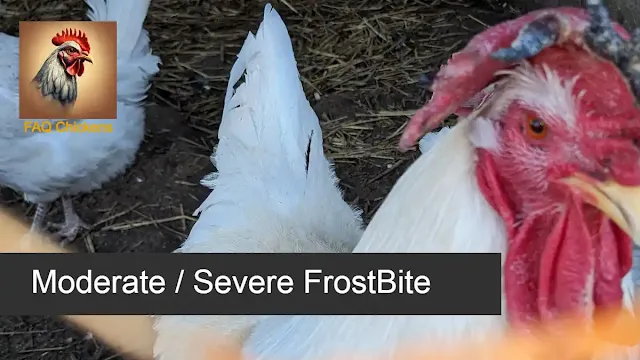 |
Frostbite in Chickens |
Can a Chicken Recover from Frostbite?
Frostbite is a serious condition that can affect chickens in harsh winter conditions. However, the good news is that with proper care and attention, chickens have the ability to recover from frostbite. Chickens are remarkably resilient creatures, and their bodies have a remarkable capacity for healing.
When a chicken experiences frostbite, it's essential to act quickly to provide them with the necessary care. First and foremost, remove the chicken from the cold environment and bring them to a warm and dry area. Gently examine the affected areas for any signs of damage or discoloration. It's important not to try to warm up the chicken too rapidly as this can cause further damage.
To aid in their recovery, it's crucial to provide chickens with a comfortable environment. Keep their coop well-insulated and draft-free, ensuring there is adequate ventilation without subjecting them to extreme temperatures. Additionally, increasing their protein intake through nutritious feed can support tissue repair and regeneration.
At what Temperature do Chickens get Frostbite?
Understanding the temperature threshold at which chickens are susceptible to frostbite is crucial for their well-being during cold winter months. Chickens can start experiencing frostbite when temperatures drop below 20°F (-6°C). However, it's important to note that factors such as humidity, windchill, and the duration of exposure also play a significant role in determining the risk of frostbite.
While some chicken breeds have better resistance to cold than others, prolonged exposure to temperatures below freezing increases the likelihood of frostbite regardless of breed. The combs, wattles, feet, and exposed skin on chickens are most vulnerable to frostbite due to limited blood flow and lack of insulation in these areas.
To protect your flock from frostbite, ensure that they have access to a well-insulated coop or shelter with proper ventilation. Additionally, provide them with bedding material such as straw or hay for added warmth and insulation. Regularly check for signs of discomfort or distress during colder periods and take precautionary measures when necessary.
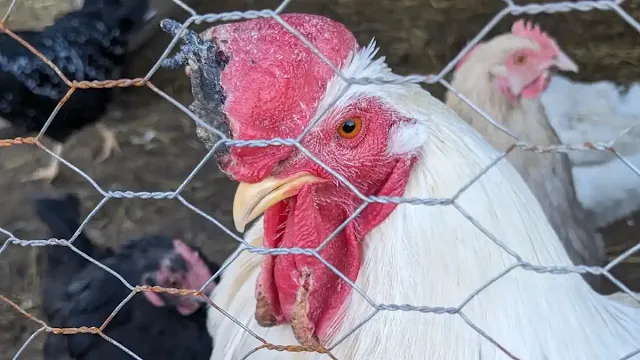 |
| Frostbite in Chickens What to Do and How to Prevent It |
Does frostbite heal on its own?
Frostbite in chickens is a serious condition that occurs when the tissues freeze due to prolonged exposure to extremely cold temperatures. When it comes to healing, the severity of the frostbite determines whether or not it can heal on its own. In mild cases, where only superficial tissues are affected, there is a higher chance of spontaneous healing. As the chicken's body temperature rises and blood circulation improves, gradual recovery may be observed.
However, in more severe cases where deeper tissues are affected and necrosis sets in, it becomes less likely for frostbite to heal on its own. The damaged tissue may require veterinary intervention such as debridement or amputation to prevent infection and promote proper healing. It's important not to solely rely on natural healing processes for advanced cases of frostbite.
The best course of action is prevention through adequate shelter and protection against extreme cold weather conditions. By ensuring your chickens have access to well-insulated coops with good ventilation and providing dry bedding material, you can significantly reduce the risk of frostbite. Regularly inspecting your flock for any signs of cold injury will allow for early detection and prompt treatment if necessary.
What temperature is too cold for chickens?
When it comes to determining the temperature that is too cold for chickens, it's important to consider their well-being and ability to withstand frigid conditions. Chickens are remarkably resilient creatures, but extreme cold can pose risks to their health. As a general rule of thumb, temperatures below 20°F (-6°C) can be dangerous for chickens, especially if they are exposed to these conditions for extended periods.
Cold weather affects chickens differently depending on various factors such as breed, age, feather density, and overall health. Some breeds are better equipped to handle colder temperatures than others. For instance, heritage breeds or those with thick feathering like Orpingtons and Brahmas tend to handle the cold better than smaller or less feathered breeds.
To ensure the well-being of your flock during chilly weather, it's crucial to provide them with appropriate shelter and insulation. An insulated coop with proper ventilation is essential in maintaining a comfortable environment for your chickens. Adding bedding material such as straw or wood shavings on the coop floor helps retain heat and prevent drafts.
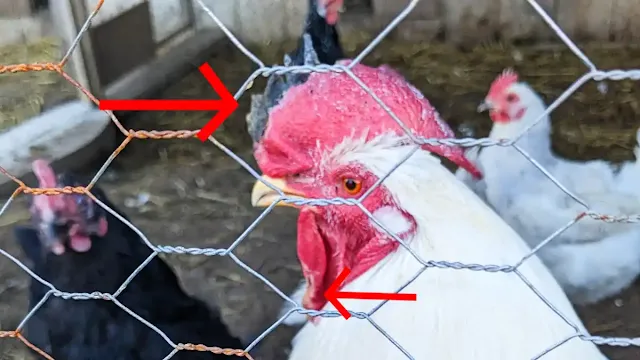 |
| Can chickens Recover from FrostBite |
How do you treat chicken frostbite?
Frostbite is a serious condition that can affect chickens during harsh winter conditions. If your feathered friends have fallen victim to frostbite, there are several steps you can take to help them recover and minimize further damage. The first and most important step is to bring the affected chickens indoors or into a heated area as soon as possible. This will prevent additional exposure to cold temperatures and allow for a controlled environment conducive to healing.
Once the chickens are in a warm space, it is crucial to assess the extent of the frostbite and determine the severity of the condition. Gently examine the affected areas, such as combs, wattles, toes, or feet, looking for signs of swelling, discoloration (black or grayish-blue), or tissue damage. Cleanse any wounds with a mild antiseptic solution like diluted Betadine or hydrogen peroxide to prevent infection.
To aid in healing and provide relief from pain and inflammation, apply a thin layer of petroleum jelly (Vaseline) onto the affected areas. This acts as a barrier against further moisture loss and helps soothe damaged tissues. Additionally, consider using an antibiotic ointment specifically formulated for poultry on any open wounds or blisters to prevent bacterial infections.
What are the 3 stages of frostbite in Chickens?
Frostbite in chickens can progress through three distinct stages, each characterized by different symptoms and levels of tissue damage. Understanding these stages is crucial for timely intervention and effective treatment.
Stage 1: Frostnip
In the initial stage, known as frostnip, chickens may exhibit signs of discomfort or pain, such as increased vocalization or agitation. The affected areas, most commonly the comb, wattles, and toes, appear pale or discolored with a waxy texture. While this stage involves mild tissue damage and can resolve without permanent harm if properly treated, it serves as an important warning sign to prevent further progression.
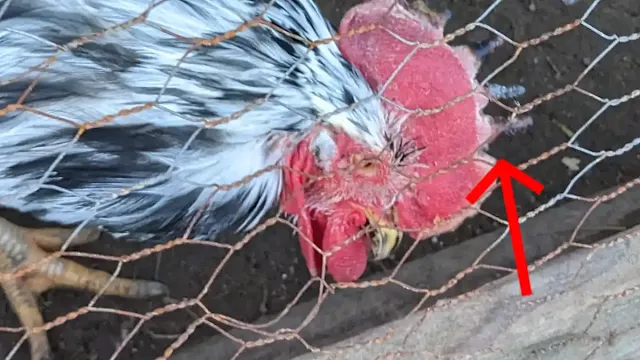 |
| How does Frostbite look like |
Stage 2: Superficial Frostbite
If left untreated or exposed to prolonged cold temperatures, frostnip can escalate into superficial frostbite. In this stage, ice crystals form within the tissues causing considerable damage to blood vessels and surrounding cells. Affected areas may turn black or dark purple due to restricted blood flow. Blisters filled with clear fluid might also develop on the skin surface.
Stage 3: Deep Frostbite
The most severe stage of frostbite is deep frostbite. At this point, significant tissue damage occurs due to longer exposure to freezing temperatures. The affected areas may become completely blackened as blood supply diminishes further. Tissue death (necrosis) becomes a concern as it can lead to infection and extended healing times.
Early recognition of these stages allows prompt action to mitigate further injury and improve chances of recovery for affected chickens.
Can I put Vaseline on my chicken's comb?
The delicate combs of chickens are particularly vulnerable to frostbite. As a prudent and caring chicken keeper, you may wonder if applying Vaseline to your chicken's comb is a viable solution. While Vaseline can create a protective barrier against the cold and wind, it is not the most recommended method of prevention or treatment for frostbite in chickens.
Vaseline, being petroleum-based, is not easily absorbed by the skin and can trap moisture against the comb, potentially exacerbating frostbite. Furthermore, it may attract dirt and bedding material that could further irritate the already compromised tissue. Instead of relying solely on Vaseline, there are more effective preventive measures you can take to safeguard your chicken's delicate tissues.
Consider insulating your coop properly with appropriate ventilation to prevent moisture build-up. Provide ample bedding and roosting bars for chickens to keep their feet off cold surfaces during winter nights. Additionally, consider using specialized products like poultry-friendly balms or ointments specifically formulated for protecting combs from frostbite. Remember: Prevention is key in ensuring your feathered friends stay happy and healthy during chilly weather.
What is the Best Ointment for Frostbite?
When it comes to treating frostbite in chickens, finding the right ointment can make all the difference in their recovery. One of the most commonly recommended ointments is petroleum jelly, commonly known by its brand name Vaseline. This versatile and readily available product acts as a protective barrier, sealing in moisture and preventing further damage to the affected areas.
Applying petroleum jelly gently onto the frostbitten areas helps to soothe and moisturize the skin, promoting healing and reducing discomfort. Its thick consistency creates a protective layer that shields exposed tissues from external elements while retaining heat much like a cozy blanket for your feathered friends.
However, it's important to note that while petroleum jelly can provide relief and aid in healing, it should not be considered a cure-all solution. Frostbite requires proper attention beyond just applying ointments. Alongside using any topical treatment, ensuring adequate shelter, warmth, and veterinary care is crucial for your chicken's overall well-being during their recovery process.
What infections can chickens get after frostbite?
Frostbite in chickens can lead to various complications and make them susceptible to certain infections. The freezing temperatures can damage the delicate tissues, creating an open door for bacteria and other pathogens to invade. One common infection that chickens may develop after frostbite is cellulitis. This bacterial infection causes the affected area to become red, swollen, and warm to touch. It is crucial to promptly address this condition by seeking veterinary care and administering antibiotics if necessary.
In addition to cellulitis, chickens with frostbite may also be at risk of developing respiratory infections. The stress caused by extreme cold and tissue damage weakens their immune system, making them more vulnerable to respiratory pathogens such as Mycoplasma gallisepticum or Infectious Bronchitis virus. These infections can affect the chicken's breathing ability and overall health, necessitating a comprehensive treatment plan including medication, isolation from other birds, and improvement of their living conditions.
Furthermore, another potential complication following frostbite is the occurrence of secondary fungal or yeast infections. The damaged skin provides an ideal environment for these microorganisms to thrive. If left untreated, these infections can cause discomfort and further damage to the already compromised tissues. Appropriate antifungal or antimicrobial treatments prescribed by a veterinarian are vital in preventing the escalation of such infections.
While it's understandable that these potential complications might raise concerns among chicken keepers, it's important not to lose hope or feel discouraged. With proper care, attention, and timely intervention from a qualified veterinarian when needed, many cases of post-frostbite infections in chickens can be successfully treated. By ensuring a clean environment for your flock and providing them with adequate nutrition and warmth during winter months, you contribute significantly towards minimizing their risk of developing subsequent illnesses after experiencing frostbite.
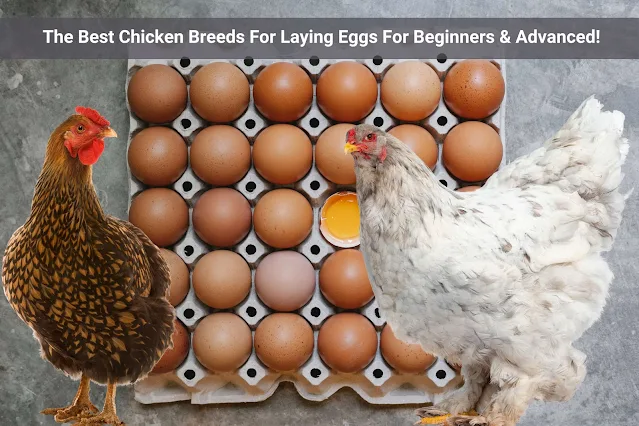 |
| Click Here to Read about The Best Chicken Breeds For Laying Eggs |
Do roosters get faster frostbite than Hens?
When it comes to frostbite in chickens, the notion that roosters are more susceptible to it than hens is a common belief. However, this claim lacks substantial evidence and may be rooted in misconceptions. The likelihood of a chicken developing frostbite is not determined by its gender but instead depends on various factors such as breed, feather quality, overall health, and environmental conditions.
Feathers play a crucial role in protecting chickens from extreme temperatures. Both roosters and hens possess feathers that provide insulation against cold weather. However, certain breeds or individuals with less dense plumage may be at higher risk for frostbite. Additionally, younger birds with underdeveloped feathers may also be more vulnerable to cold-related injuries.
It's important to note that proper husbandry practices can significantly reduce the risk of frostbite regardless of gender. Ensuring that chickens have access to a dry and draft-free shelter is essential during cold weather conditions. Providing extra bedding or insulation can help maintain warmth within the coop. Regularly checking for signs of frostbite and promptly addressing any issues can prevent further complications and promote healing.
 |
| FAQ Chickens |
Do you have ANY Questions about Chickens? Leave a reply on one of our FAQ articles, and we will answer you within 24 hrs, or we create a FAQ Chicken Blog Post about your question!
You also can check out Boyd's BIG Feathers Farm YouTube Channel, for more Info about Chickens, Funny Chicken Videos, How to Raise Chickens the Successful Way, Tips & Tricks in DIY Backyard Chickens and other Homesteading Videos! - We hope to see you soon! ~ Boyd from BIG Feathers Farm!
